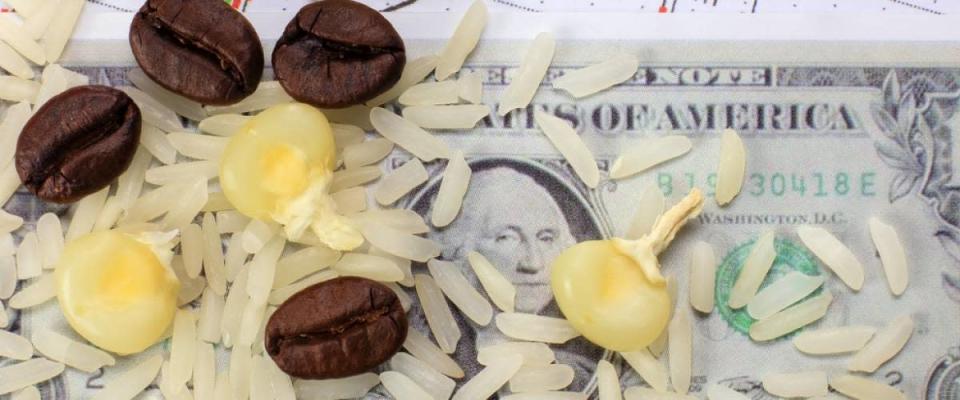Diversify your portfolio the right way — here are 5 assets with little connection to the stock market’s wild swings

If your idea of a diversified portfolio is one that only needs growth and value stocks, it’s a good thing you’re reading this.
With prominent investors like Michael Burry, Jeremy Grantham and Charlie Munger expecting a historic correction to hit the stock market, it’s an opportune time to take a long, thoughtful look at your portfolio.
Specifically, you need to make sure it holds the kinds of assets that can help offset any potential losses associated with your stock market exposure.
Let’s look at five assets that can help grow your portfolio, even in the midst of market chaos. We’ll start with three traditional asset classes and then dig into two overlooked examples that show just how interesting — and profitable — alternative investments can be.
1. Bonds

When inflation is making short work of fixed-income returns, bonds can seem even less attractive than usual.
But elevated inflation won’t be around forever, and if the stock market truly is in for a reckoning, the guaranteed income associated with bonds, modest as it is, may be easier to stomach than a historic decline in share values.
In addition to the lower risk, investors also opt for bonds at times of economic uncertainty because decreases in consumer spending can lead to weakening profits and lower share prices.
The bond market is vast, so you should be able to find products that meet your needs as an investor.
U.S. savings bonds, mortgage-backed securities and emerging market bonds are a few examples. And getting exposure is now as easy as purchasing established bond ETFs such as the iShares U.S. Treasury Bond ETF, SPDR Long Term Corporate Bond ETF, and VanEck Investment Grade Floating Rate ETF.
2. Real estate

Real estate is detached from the stock market to such an extent that it provides one of the best hedges against falling share prices.
There hasn’t been a period in recent American history where millions of people weren’t willing to pay for shelter, either by renting or buying properties of their own.
Demand for housing may fluctuate from neighborhood to neighborhood, but its overall ceaselessness should continue to push prices and rent higher, no matter what’s happening on Wall Street.
Purchasing an investment property — a condo, a detached home, a triplex — is the ideal for most investors. Others are happy to keep updating their own residence with an eye toward a future sale.
You can also purchase shares in a real estate investment trust, or REIT, which distributes rental income to shareholders. Names like Realty Income, Digital Realty Trust, and Public Storage should provide a good starting point for investors who’d like to investigate the space.
3. Commodities

Commodities can help shield your portfolio from a declining stock market, but they come with their own unique risks.
When investing in commodities, you’re buying the raw materials used to produce consumer goods and reselling them at (hopefully) a higher price. Cotton, coffee, metals, cattle and petroleum products all qualify as commodities.
Commodity prices are a reflection of supply and demand dynamics in individual markets, so their performance isn’t tied to the stock market. Commodities tend to have a low to negative correlation to both stocks and bonds.
That said, commodities investing is inherently volatile. Unfavorable weather could ruin an investment in chickpeas; new regulations could kill your investment in coal. But if everything falls into place, the returns can be great.
These days, a practical way to invest in commodities is through well-established, broad-based commodity ETFs, such as the Invesco DB Commodity Index Tracking Fund.
If you want to invest in a specific commodity, there are ETFs for that too. For instance, gold bugs have long loved the SPDR Gold Shares ETF for easy access to the market.
Meanwhile, gold mining companies like Barrick Gold and Newmont should also do well if the price of the yellow metal goes up.
4. Fine art

Like commodities, art values depend on supply and demand; it’s just that supply, when it comes to art, means a one-of-a-kind display of genius — something people regularly pay millions for.
In addition to being uncorrelated with the stock market, fine art has the ability to kick off healthy returns.
Between 1995 and 2020, contemporary art has outperformed the S&P 500 by 174% — that’s nearly three times the returns — according to the Citi Global Art Market chart.
Fine art used to be an investment for wealthy aficionados with access to the capital and insight required to make smart purchases.
But new platforms are helping everyday investors get into the fine art market by selling shares in modern masterpieces that could one day be sold for solid gains.
“Those artists tend to appreciate at single-digit to low-double-digit rates, but they’re very good stores of value,” says Scott Lyn, CEO of art investing platform Masterworks. “It’s very unlikely that you lose money investing in one of those paintings.”
5. Sports cards

In the same investable, collectible vein as fine art lie sports cards, some of which can be worth a fortune.
In October, a rare Michael Jordan Upper Deck card was auctioned off for $2.7 million. Earlier this year, a Tom Brady rookie card was sold for $2.25 million.
Social media and a whole lot of pandemic-related free time spent digging through old collections have helped trigger a new wave of interest in sports cards.
They’re like a meme stock alternative — they don’t always pay off, but when they do, look out.
You can play the sports card game in many ways:
-
Buy individual cards you think will maintain their value.
-
Buy boxes of cards and go hunting for one-of-a-kind items that can sell for ridiculous amounts.
-
Pool your money with other investors to purchase high value cards and resell them at some point in the future.
-
Find a broker who, for a fee, will help you buy, sell and trade sports cards like stocks.
Just be careful.
The bottom fell out of the sports card market in the mid-90s — too many companies, too many cards. With all the money the space is attracting today, expect more companies to try and get a piece of it.
This article provides information only and should not be construed as advice. It is provided without warranty of any kind.




